Padre Island, off the coast of Texas, is the longest barrier island in the world. It stretches 113 miles, north and south, from Corpus Christi in the north (the upper end of the island is a district in the mainland city of Corpus Christi) to the community of South Padre Island, near the mainland city of Port Isabel, in the south. It is bordered on the east by the Gulf of Mexico and on the west by the Laguna Madre. It is the second largest island by land area in the contiguous U.S., after Long Island in New York.
A barrier island is an island formed by wave and tidal action parallel to a mainland coast and consists of flat and/or lumpy areas of sand. Other barrier islands I've personally visited in the U.S. are Galveston Island in Texas, Sanibel Island and Miami Beach in Florida and Jones Beach Island off Long Island in New York.
Padre Island was split into two islands, that have become known as South Padre Island and North Padre Island, in 1957 by the
Port Mansfield Channel, a privately built channel, 30 miles north of the south end of the island. The channel was destroyed later that year and then built again by the U.S. Army Corps of Engineers in 1962 to its present state. The channel permits tidal exchange with the Laguna Madre, the inland water area, and provides ocean access to the fishing port of Port Mansfield. The man-made
Packery Channel, which separates North Padre Island from Mustang Island to the north, is just one of several channels that replaced the natural and much larger Corpus Christi Pass that silted up and was closed by the 1940s.
South Padre Island, which I visited in September 2019, is becoming quite commercial and a beach destination. North Padre Island, which we visited over Thanksgiving weekend in November 2021, is mostly preserved in its natural state as part of Padre Island National Seashore ("PINS"). PINS extends for 70 miles and has 65.5 miles of gulf beach. There are paved roads from the entrance down to Malaquite Campground and Visitor Center, into Bird Island Basin, and to North Beach. Below Malaquite Visitor Center it is possible to drive on the beach for about five miles without four-wheel drive. Beyond that, you can continue by vehicle, but four-while drive is strongly recommended. More than 380 species of bird have been seen on PINS and it is also an important nesting ground for the critically endangered
Kemp's ridley sea turtle.
We visited on a cold, rainy Thanksgiving Day, early in the morning. We encountered a Texas white-tailed deer just inside PINS and continued past Malaquite Visitor Center down to the seashore and drove along it. We drove back, drove into Bird Island Basin, then drove north to Port Aransas on Mustang Island. Then we drove back to PINS and drove all five miles of the beach down to the five mile marker and back.
Photos we took along the way follow:
 |
| Just inside the entrance to Padre Island National Seashore is grass as far as you can see. |
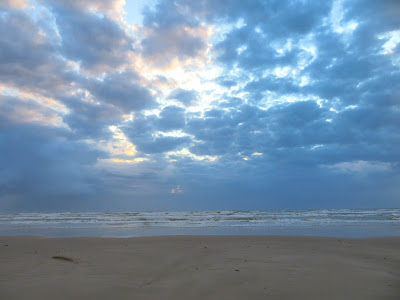 |
| Past the Malaquite Visitor Center the road leads to the beach. It was a cold morning threatening storm. |
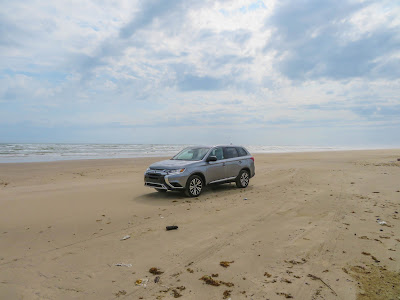 |
| Our rental car on the beach. It is the first time I recall driving along a beach for any distance. |
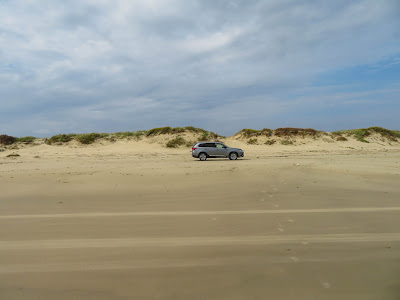 |
| From near the ocean, looking back at the rental car and the dunes behind it. |
 |
| A closer look at the dunes. |
 |
| A look at the landscape inside the dunes. |
 |
| The signs at mile marker 5. |
 |
| Texas white-tailed deer |
 |
| Royal terns. The only other place I've seen royal terns was two years ago near South Padre Island. |
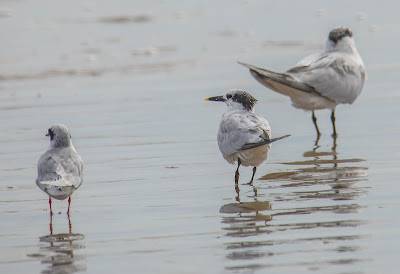 |
| A sandwich tern, center, a first for me. It has a small orange section at the tip of its bill. |
 |
| Forster's terns. |
 |
| Caspian terns, one of my favorites. I love their bold red bills and sloping heads. They remind me of secret agents in the mold of Maxwell Smart. |
 |
| Black-bellied plovers, a first for me. |
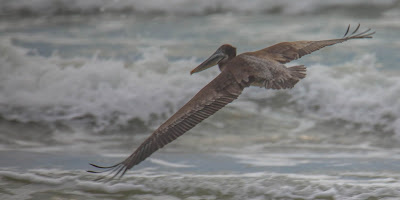 |
| Brown pelicans |
 |
| Double-crested cormorants |
 |
| Great blue herons |
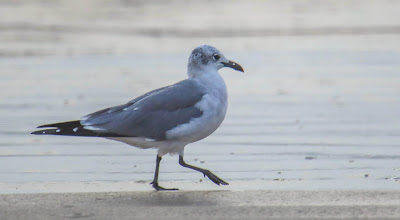 |
| Laughing gulls |
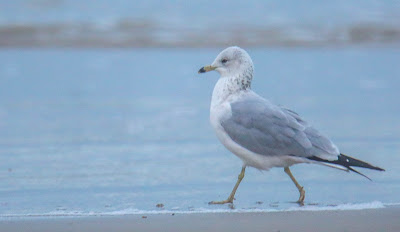 |
| Ring-billed gulls |
 |
| Willet |
 |
| Long-billed curlews |
 |
| Red knot, another first for me. I'd never heard of it before. |
 |
| Ruddy turnstones |
 |
| Sanderlings |
 |
| What I believe is a first winter California gull. |
 |
| On the way to Bird Island Basin we saw this great egret in the grass. |
 |
| American white pelicans in Bird Island Basin. |
 |
| Brown pelicans in Bird Island Basin |
 |
| Laughing gulls in Bird Island Basin. |
 |
| Crested caracara just outside Padre Island National Seashore. |





























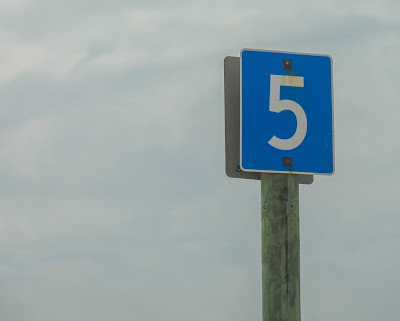








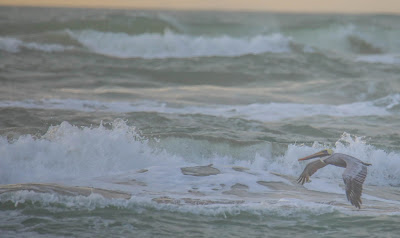












It was really fun to drive along the beach on the sand. Now I know the attraction of dune buggies. But seeing only a few other vehicles made it extra fun. There were so many birds, and I didn't realize who much variety there was until I looked at these photos.
ReplyDelete